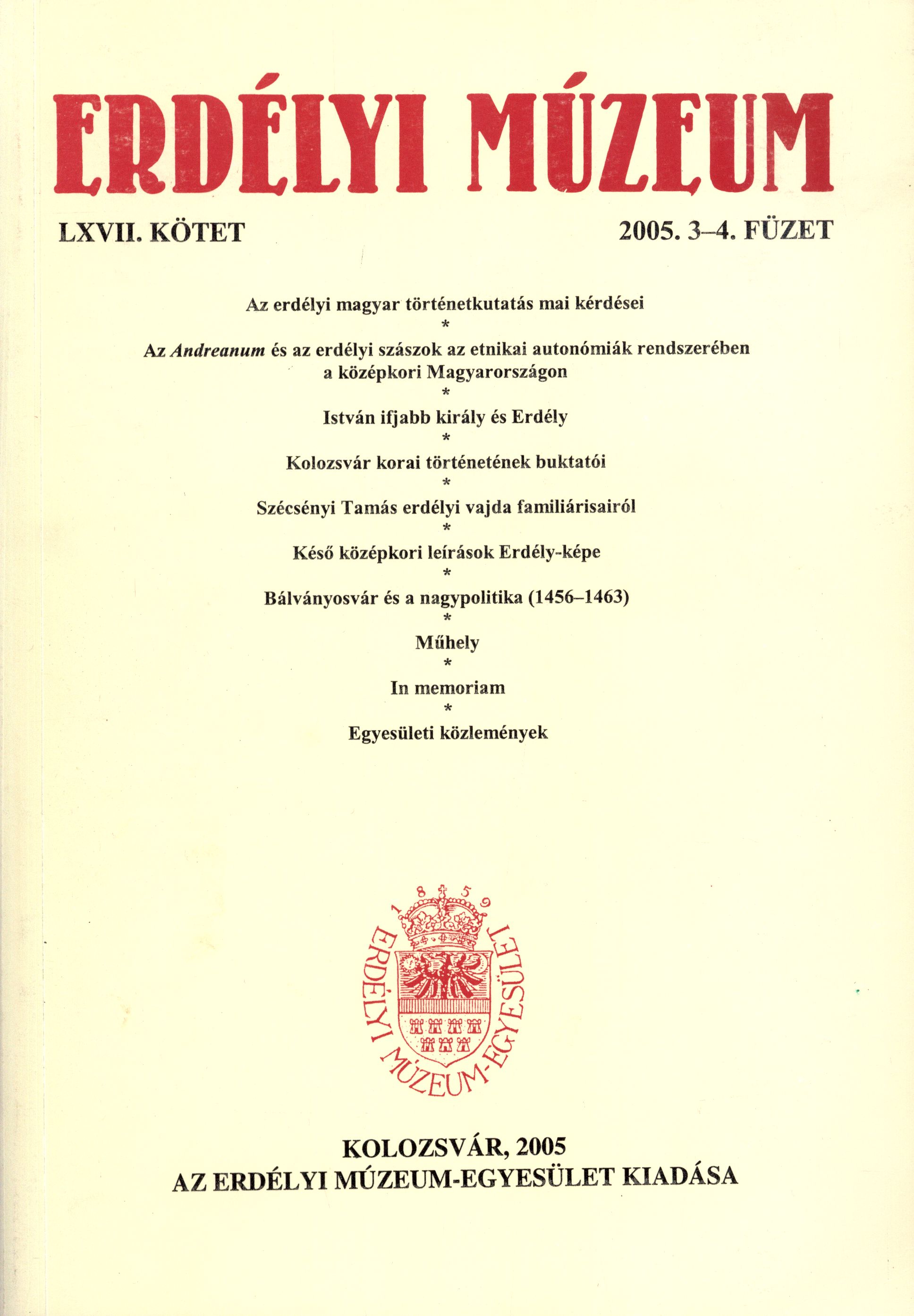Késő középkori leírások Erdély-képe
The Transilvania-picture of Late Mediaeval Descriptions
Author(s): Enikő CsukovitsSubject(s): Cultural history, History of ideas, 15th Century, 16th Century
Published by: Erdélyi Múzeum-Egyesület
Keywords: medieval descriptions; late-medieval period; Transylvania; medieval Hungary; Piccolomini; Pietro Ransano; Antonio Bonfini
Summary/Abstract: The present study seeks to reconstruct the knowledge that contemporaries had of mediaeval Hungary. It does so by gathering the information dispersed in geographical works, published in the late 15th and early 16th centuries, on one of the less known regions of Hungary, namely Transylvania. The series of general works which give information on Hungary begins with the De Europa of Aeneas Sylvius Piccolomini. The great cosmographical work, which remained unfinished because of the pontificate and then the death in 1464 of Aeneas, aimed at describing the geographical, enthnographic and historical characteristics of Europe and Asia, and is regarded as one of the outstanding scientific achievements of the period. Although the part devoted to Asia appeared first in 1477 at Venice, and the first edition of the European survived from 1490, both of them were widely known before. In Hungary the first descriptions of the country were prepared by the Italian historians of king Mathias, Pietro Ransano and Antonio Bonfini. The first to mention is Ransano’s A concise history of Hungary. More or less detailed descriptions of Transylvania are contained in Bonfini, who compiled Ransano, as well as in the World Chronicle of the German Hartmann Schedel, who copied the De Europa; in the Geografia of Sebastiano Compagni; and in the True description of the battle of the Hungarians and the Turks at Mohács by István Brodarics. The author of the most detailed description, Miklós Oláh, prepared his Hungaria abroad after the deteat at Mohács (1526). The study compares the material extracted from chronicles and geographical works with two further groups of sources which have never been studied together. On the first hand, it uses the reports of foreigh envoys who travelled through Transylvania or otherwise received information thereof; on the other hand, it relies on information gathered from contemporary maps, before all those of the Florentine Francesco Rosselli and the Henricus Martellus Germanus. Having reviewed the various descriptions of Transylvania, we can have a general picture of contemporary knowledge. This material is surprisingly homogeneous: local and foreign authors, chroniclers and envoys spoke in similar terms. All of them emphasised the importance of mining, before all the great quantity of precious metals, as well as the Roman past, etnical multiplicity, the various features of the different ethnies, and the huge stocks of animals. They mentioned some of the towns, such as Szeben, Brassó, Beszterce and kolozsvár, and some specialities, for example the acid water and the ancient bones to be found in the caves. The most important result of the analysis is the trusworthiness of contemporary descriptions. Although all of them contain minor inaccuracies, the author did not find any major error or conspicuously false information.
Journal: Erdélyi Múzeum
- Issue Year: LXVII/2005
- Issue No: 3-4
- Page Range: 86-104
- Page Count: 19
- Language: Hungarian

